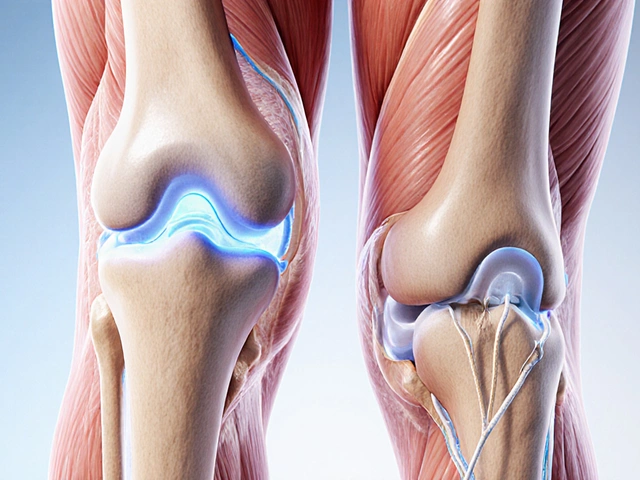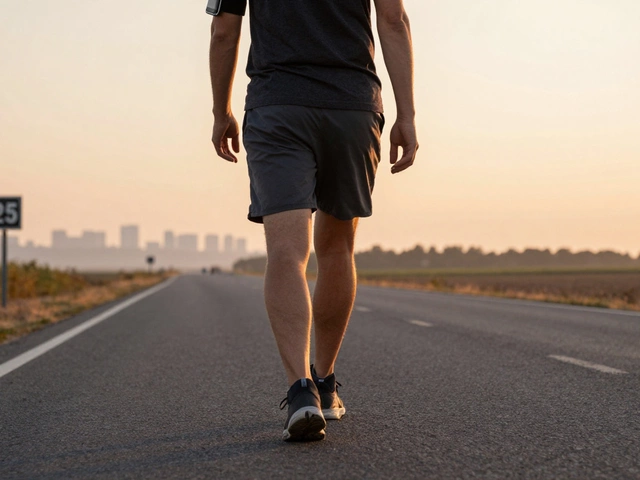- Home
- Orthopedics
- Effective Ways to Loosen a Stiff Knee
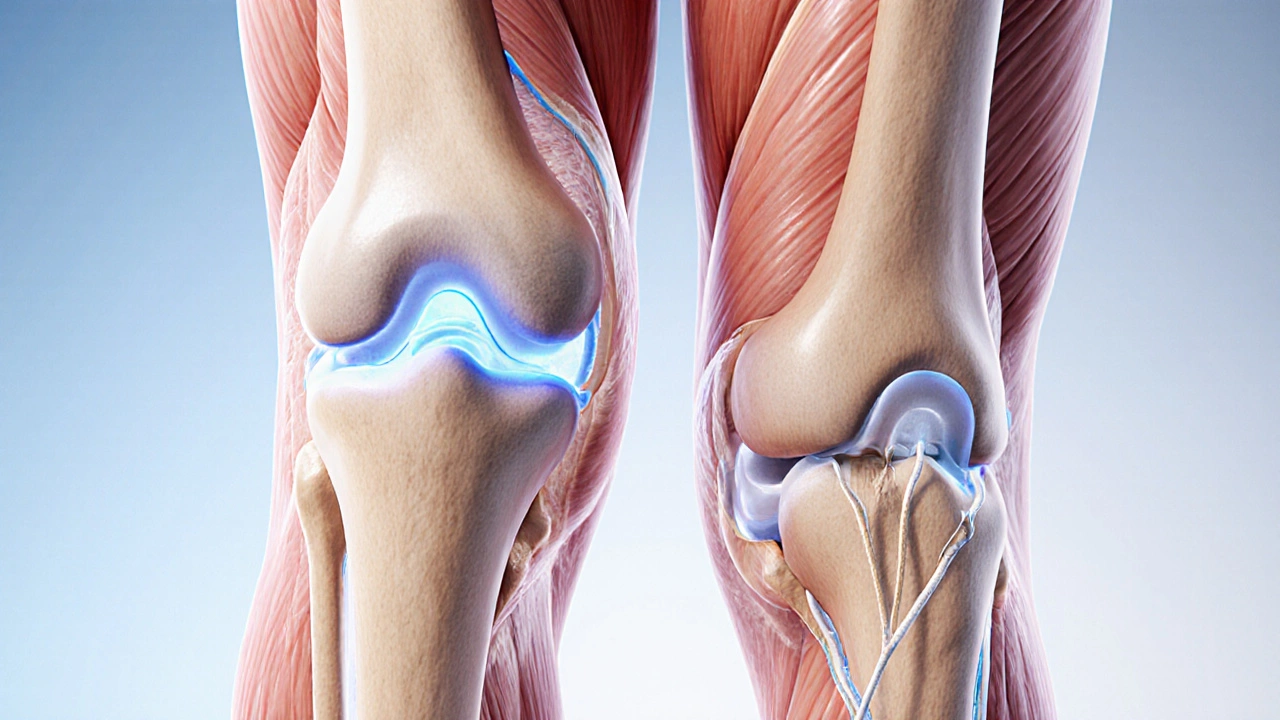
Effective Ways to Loosen a Stiff Knee
Knee Stiffness Relief Guide
Your Personalized Knee Care Plan
Stretching
Helps increase muscle length and joint range. Best for general stiffness without swelling.
- Quarter-Squat Hold
- Standing Hamstring Stretch
- Quadriceps Pull-Back
Heat Therapy
Relaxes muscles and boosts blood flow. Best for tightness and chronic stiffness.
- Warm towel application
- Heating pad (15-20 mins)
- Warm shower
Cold Therapy
Reduces swelling and pain. Best after activity or when swelling is present.
- Ice pack (10-15 mins)
- Frozen vegetable bag
- Cold compress
Ever wake up and feel like your knee won’t cooperate? A tight, stiff knee can turn everyday activities into a chore. The good news is that most stiffness isn’t a sign of permanent damage-simple movements, temperature tricks, and smart habits can restore smooth motion fast.
What Does a “Stiff Knee” Actually Mean?
Knee joint is a complex hinge that connects the thigh bone (femur) to the shin bone (tibia) and relies on cartilage, ligaments, and synovial fluid for smooth movement. When any of those components become irritated, the joint can feel tight, resistant, or even “locked.” Common culprits include:
- Inflammation of the meniscus a C‑shaped cartilage that cushions the knee during motion.
- Reduced production of synovial fluid the lubricating liquid that feeds cartilage and minimizes friction.
- Tight quadriceps muscle the front thigh muscle responsible for extending the knee or hamstring muscles the rear thigh group that bends the knee.
- Overuse, inactivity, or sudden changes in activity level.
Understanding the source helps you pick the right remedy.
Quick Self‑Check: How Bad Is the Stiffness?
- Try to fully straighten your leg while seated. Can you achieve 0°-5° of bend? If not, note the limitation.
- Attempt a gentle heel‑to‑buttock stretch. Does the back of the knee feel tight or painful?
- Check for swelling or warmth-these signs often point to inflammation rather than simple tightness.
Based on what you observe, you can tailor the following methods.
Gentle Stretching: The First Line of Defense
Stretching targets the surrounding muscles and promotes blood flow, which in turn encourages synovial fluid production.
- Quarter‑Squat Hold: Stand with feet hip‑width apart, bend knees slightly (about 45°), hold for 20‑30 seconds, repeat 3 times.
- Standing Hamstring Stretch: Place one heel on a low step, keep the leg straight, hinge at the hips, and lean forward until a gentle pull is felt behind the knee. Hold 15 seconds, switch sides.
- Quadriceps Pull‑Back: While standing, grab the ankle of the same side, pull the heel toward the buttocks, keep knees aligned. Hold 15 seconds, repeat 3 times per leg.
Perform these moves twice daily-morning and evening-for the best stiff knee relief. Consistency beats intensity.
Heat Therapy: Loosen the Fibers
Heat expands blood vessels, relaxes muscle fibers, and reduces joint stiffness. Use a warm towel, heating pad, or warm‑water soak for 15‑20 minutes before stretching.
When you feel a “tight band” around the knee rather than sharp pain, heat is your friend. Avoid heat if the joint is swollen or feels hot to the touch-that indicates inflammation, and cold is preferable.
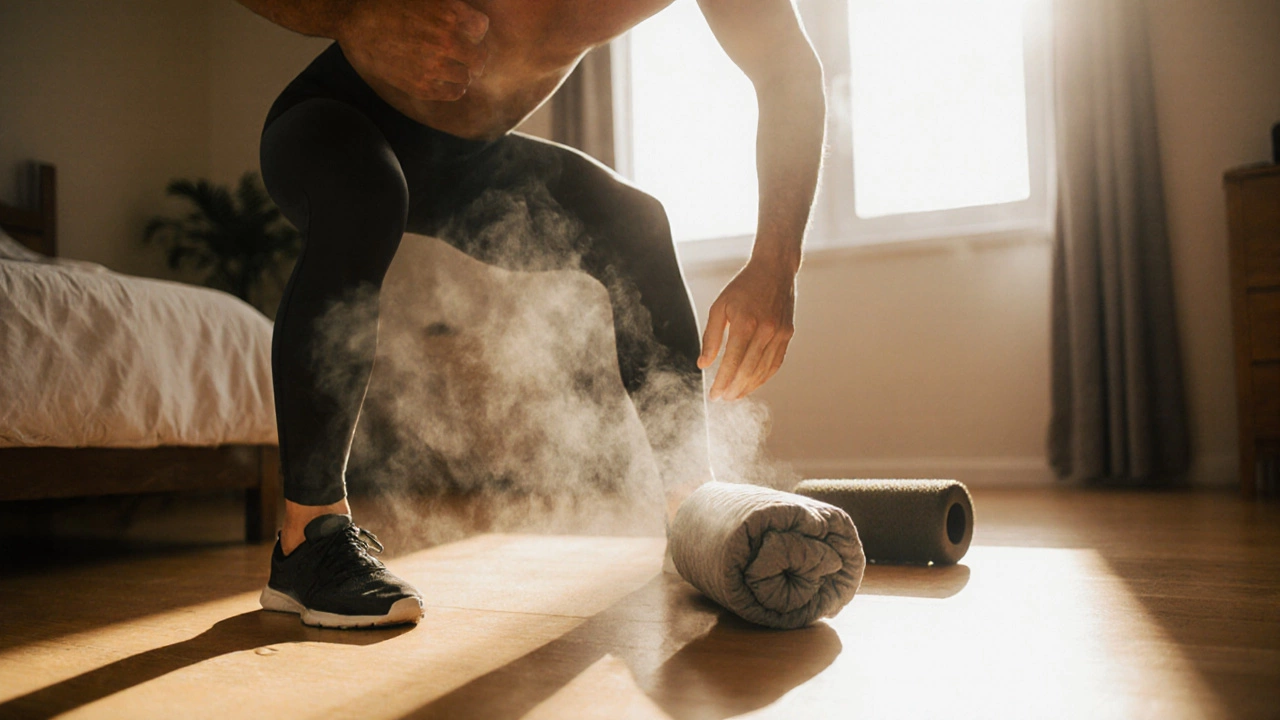
Cold Therapy: Calm the Inflammation
Ice constricts blood vessels, lessening swelling and numbing pain. Apply a gel pack or a bag of frozen peas wrapped in a thin cloth for 10‑15 minutes, especially after activity.
Cold is most effective when you notice:
- Visible swelling.
- Warmth or redness around the joint.
- Pain that spikes during or after exercise.
Alternate heat and cold (e.g., heat before stretching, cold after) to gain both flexibility and anti‑inflammatory benefits.
Strengthening Exercises: Build Support, Reduce Future Stiffness
Weak muscles force the knee joint to compensate, leading to abnormal wear and stiffness. Simple, low‑impact exercises can reinforce the joint without overloading it.
- Straight‑Leg Raises: Lie on your back, keep the knee straight, lift the leg 6‑8 inches, hold 5 seconds, lower slowly. Do 2 sets of 10 per leg.
- Wall Sit: Slide down a wall until thighs are parallel to the floor (or as low as comfort allows), hold 15‑30 seconds, rise and repeat 3 times.
- Heel Slides: Sit with the leg extended, slide the heel toward the buttock, then back out. Perform 2 sets of 12.
These moves engage the quadriceps muscle crucial for knee extension and stability and hamstring muscles essential for knee flexion and balanced joint mechanics without causing strain.
Self‑Massage & Foam Rolling: Target Tight Spots
Manual pressure releases myofascial knots that pull the knee capsule tight.
- Quadriceps Roll: Lie face‑down, place a foam roller under the front thigh, roll from hip to knee for 1‑2 minutes.
- IT‑Band Glide: Sit, cross one leg over the other, use a stick or massage ball to glide along the outer thigh toward the knee.
- Patellar Mobilization: Gently press the kneecap in circles using your fingertips for 30 seconds each direction.
Do the massage after warming the area-either with a warm shower or a heating pad-to increase tissue pliability.
Comparison of Common Home Strategies
| Method | Primary Goal | Best When | Typical Duration |
|---|---|---|---|
| Gentle Stretching | Increase muscle length & joint range | General stiffness without swelling | 5‑10 minutes per session |
| Heat Therapy | Relax muscles & boost blood flow | Tightness, chronic stiffness, pre‑activity | 15‑20 minutes |
| Cold Therapy | Reduce swelling & pain | Post‑activity soreness, visible swelling | 10‑15 minutes |
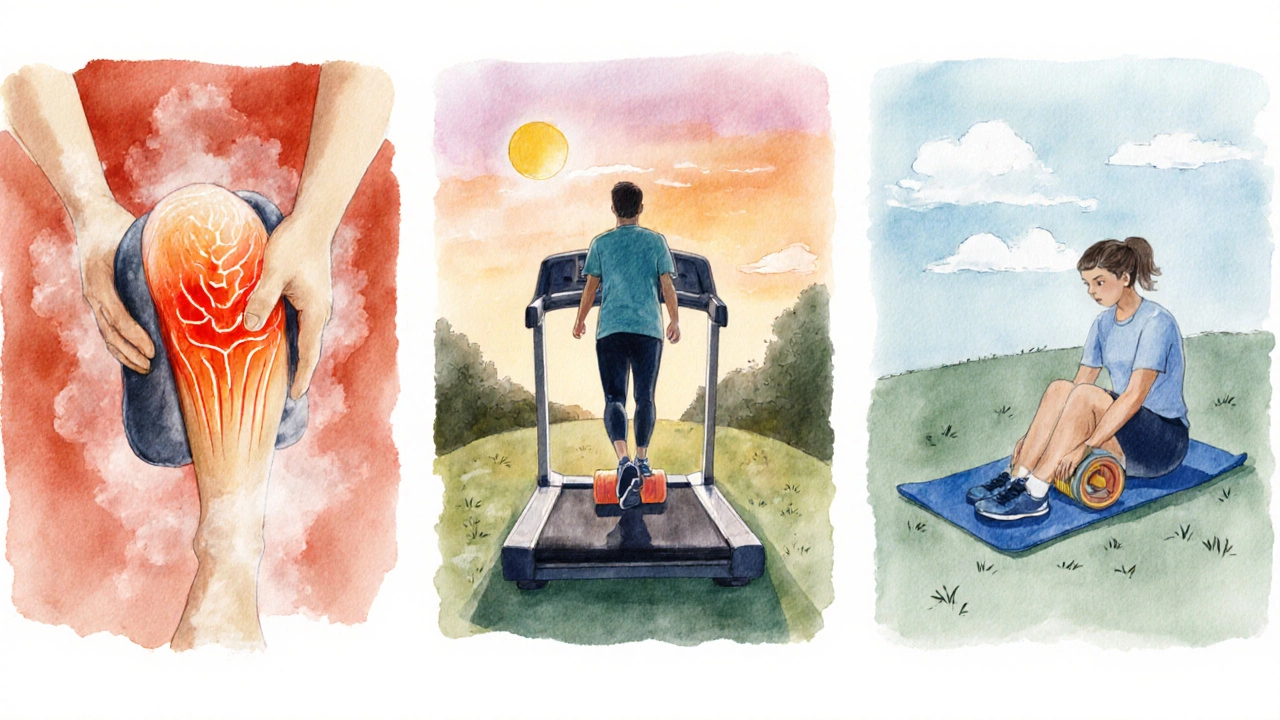
When to Seek Professional Help
If stiffness persists beyond two weeks despite daily self‑care, or if you notice any of the following, schedule a visit:
- Sharp, localized pain during movement.
- Visible swelling, redness, or warmth.
- Locking or “giving way” sensations.
- Difficulty bearing weight.
A qualified physical therapist a licensed professional who designs individualized exercise and manual‑therapy programs to restore function can assess alignment, prescribe targeted strengthening, and use modalities like ultrasound or joint mobilization. In rare cases, imaging (X‑ray, MRI) may be needed to rule out structural damage.
Lifestyle Tweaks to Keep the Knee Happy
Long‑term knee health isn’t just about daily stretches; it’s also about the habits that surround you.
- Weight Management: Every extra kilogram adds roughly 4kg of pressure to the knee with each step.
- Supportive Footwear: Shoes with good arch support reduce abnormal forces transmitted to the knee.
- Low‑Impact Cardio: Swimming or cycling keeps the joint moving without pounding it.
- Regular Movement Breaks: If you sit for long periods, stand, march in place, or do a quick knee flex‑extension set every hour.
Sample Daily Routine for a Stiff Knee
- Morning (7am): 10‑minute warm shower → 5‑minute heating pad on the knee → perform the three stretches listed above.
- Midday (12pm): 5‑minute walk or light cycling → quick quad set (2×10) and heel slides (2×12).
- Afternoon (3pm): If you feel any swelling, apply ice for 10minutes.
- Evening (7pm): Foam‑roll the quadriceps and IT‑band → finish with a 5‑minute gentle stretch and a brief warm‑compress session.
Adjust the timing to fit your schedule, but keep the sequence of warm‑up → movement → cool‑down consistent.
Frequently Asked Questions
Can I use a frozen vegetable bag as an ice pack?
Yes, a bag of frozen peas works well because it conforms to the knee shape. Just wrap it in a thin towel to protect your skin.
Is it safe to stretch my knee if I have arthritis?
Gentle, pain‑free stretches are usually beneficial for arthritis. Avoid aggressive forced bends; stop if you feel sharp pain.
How long does it take to see improvement?
Most people notice a difference within a week of consistent daily work. If stiffness remains after two weeks, consider professional assessment.
Should I take painkillers before stretching?
Mild over‑the‑counter NSAIDs can reduce pain, but they’re not a substitute for proper movement. Take them only as directed and focus on the stretches.
Can a stiff knee be a sign of a serious injury?
Occasionally, severe locking or sudden pain may indicate a torn meniscus or ligament injury. If you hear a pop, experience sharp pain, or can’t bear weight, seek medical care immediately.

Arnav Singh
I am a health expert with a focus on medicine-related topics in India. My work involves researching and writing articles that aim to inform and educate readers about health and wellness practices. I enjoy exploring the intersections of traditional and modern medicine and how they impact healthcare in the Indian context. Writing for various health magazines and platforms allows me to share my insights with a wider audience.
About
Medical Resource Center India is a comprehensive online platform dedicated to providing reliable health information and medical resources in India. Explore a wide range of articles, tips, and advice on medicine, healthcare services, and wellness. Stay informed about the latest developments in Indian medicine and access valuable insights into maintaining a healthy lifestyle. Discover expert guidance and health solutions tailored for every Indian citizen. Your go-to destination for authoritative medical knowledge in India.
